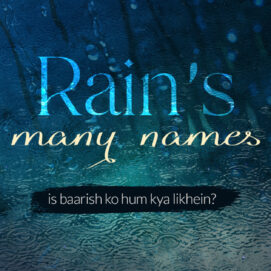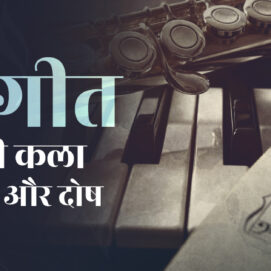زیادہ تلاش کیے گئے الفاظ
محفوظ شدہ الفاظ
کِھسیانی بِلّی کَھمبا نوچے
جسے غصہ آرہا ہو وہ دوسروں پر اپنی جھلاہٹ اتارتا ہے، بے بسی میں آدمی دوسروں پر غصہ اتارتا ہے، شرمندہ شخص دوسروں پر اپنی شرمندگی اتارتا ہے، کمزور کی جھنجھلاہٹ
چَمَنِسْتان
ایسا باغ جہاں پھول کثرت سے ہوں، ایسی جگہ جہاں دور تک پھول ہی پھول اور سبزہ سبزہ نظر آئے، گلزار، گلستان، باغ، پھولوں کا قطعہ، سبز کھیت
A Tapestry of Tradition: The Legacy of Indian Fabric Names

Over time, humans have crafted myriad terms and terminologies for the countless varieties of fabrics used for making clothes, coverings, and bedding. The origins of these names, their original meanings, and the etymological alterations that occurred with time make a case for a fascinating study. The most distinctive feature of the fabrics produced in India is the beautiful and poetic names they have earned over the past couple of centuries. In this brief write-up, we will traverse the world of some of these fascinating names and traditions associated with them.
Aab-e-Rawan (آب رواں)
One of the most gentle names is Aab-e-Rawan. The word "Aab" (آب) means water, and "Rawan" (رواں) refers to flowing, so "Aab-e-Rawan" stands for "flowing water." This was the name of an elegant type of muslin with an ultra-fine nature. The name itself reflected its delicacy. There are two popular narratives associated with this fabric. One that dates back to the Aurangzeb era is that the Emperor was displeased with his daughter Zeb-un-Nisa for appearing before him in a dress through which her skin was visible. The princess answered that she was wearing seven layers of Aab-e-Rawan. The second story goes back to the era of Nawabs. Nawab Alivardi Khan is said to have punished his weaver and ousted him from the city because he negligently stretched out a piece of Aab-e-Rawan on the grass and a cow ate it. The fabric was so delicate that the cow could not distinguish between it and the grass beneath it. Despite the poetic exaggeration in these tales, Aab-e-Rawan was a very fine muslin of its time. Several European trading companies exported it from India, where it was known among the English as "Abron."
Jamdani (جامدانی)
Our next pick is Bengal's Jamdani. Jamdani sarees are popular all over the sub-continent, but the origin of the name is quite enthralling. "Jama" refers to clothing, and "Dani" or the suffix "dan" signifies a container or box particularly used to hold something. "Shakar-dani" شکر دانی (sugar pot), "pandan" پاندان (betel box), or "guldan" گلدان (vase) are some famous examples. Although "Jama-dani" originally referred to a leather chest used to store clothing, Jamdani came to be associated with a very fine muslin from Dhaka, known for its floral patterns woven into the fabric. Due to the delicacy and value of this fabric, it was carefully stored in a chest, hence the name Jamdani came into being.
Baadla (بادلا)
Baadla is a silk fabric with silver work on it. "Baadla" refers to the sky, where stars twinkle at night. Considering the shimmer of Baadla, it was likened to stars in the sky. Baadla also refers to the gold and silver threads used to create designs on the fabric. Nowadays, this work is known as Kamdani, (کامدانی) and these threads are used to produce small floral or star-like patterns on Dupattas and Sarees. Kamdani patterns are also integrated into Chikankari embroidery.
Deeba (دیبا)
This fabric has been mentioned considerably in Urdu poetry. The word belongs to the Persian. Historically, Deeba was an expensive fabric made from silk and gold threads, featuring innumerable elegant floral designs. It is said that the original word was "Deo-baf," (دیو باف) meaning the fabric woven by a "Deo" دیو or a supernatural being. The fabric was so exquisite that it was initially thought to be a product of otherworldly craftsmanship rather than human skill. Deeba is also used as a girl's name, and a new type of fabric by this name has already been invented in India.
"Deebaacha"دیباچہ (foreword) is derived from the same root. Some believe that the initial pages of books were often decorated with floral patterns, which led to the foreword being called "Deebaacha."
In conclusion, the poetic and historical significance of these fabric names from the Indian subcontinent highlights the deep connection between culture, language, and craftsmanship. Each name, whether Aab-e-Rawan, Jamdani, Badla, or Deeba, carries a rich legacy of artistry, tradition, and stories passed down through generations. These fabrics were not merely plain and simple, rather they were a reflection of the region's artistic soul, a testament to the skill of the weavers, and a symbol of the beauty that could be shaped through the interplay of language and material. As we reflect on these names and the folklore attached to them, we are reminded of the unending legacy of the textile arts in India that continues to inspire and captivate the generations.
Delete 44 saved words?
کیا آپ واقعی ان اندراجات کو حذف کر رہے ہیں؟ انہیں واپس لانا ناممکن ہوگا۔





